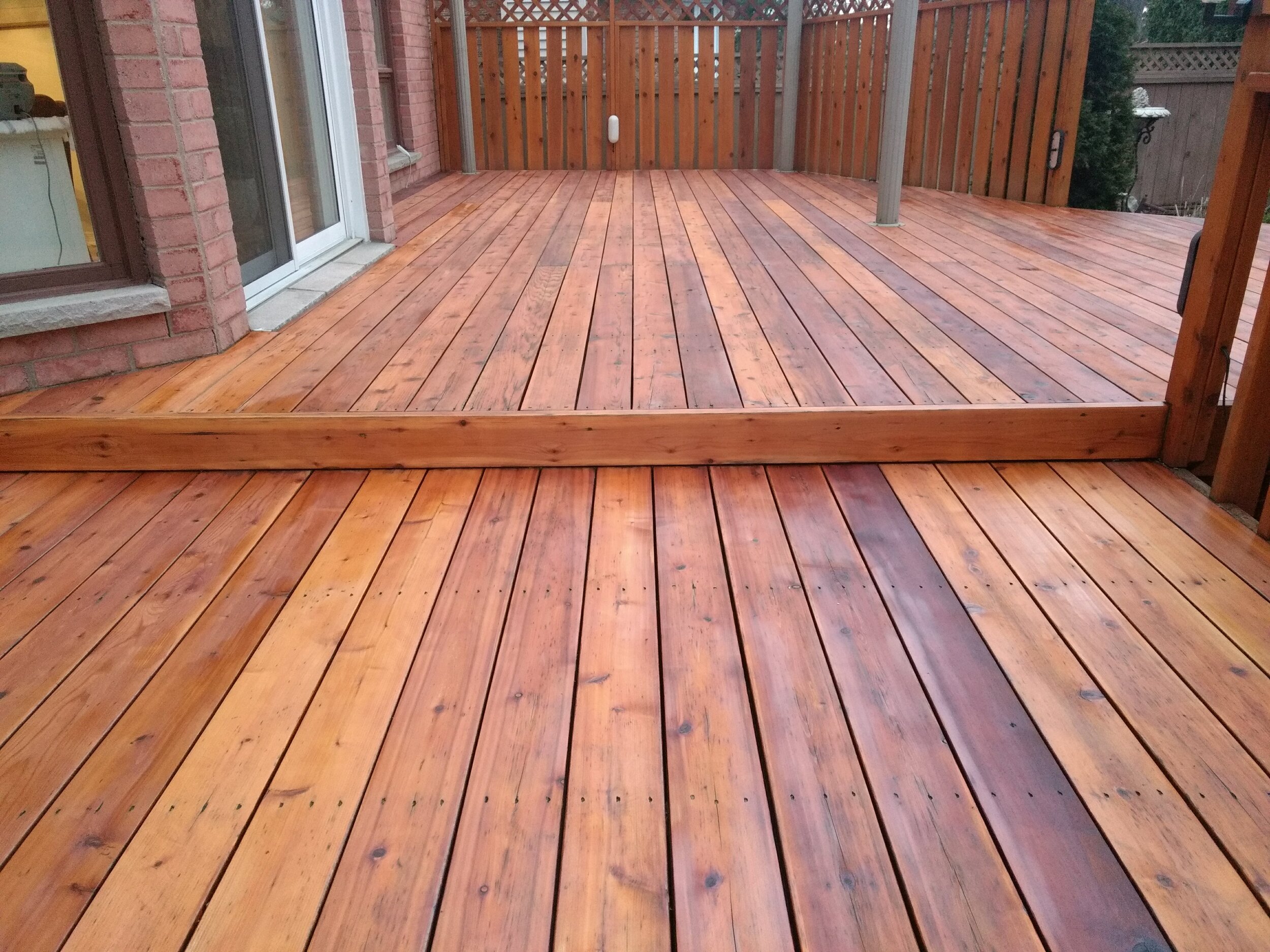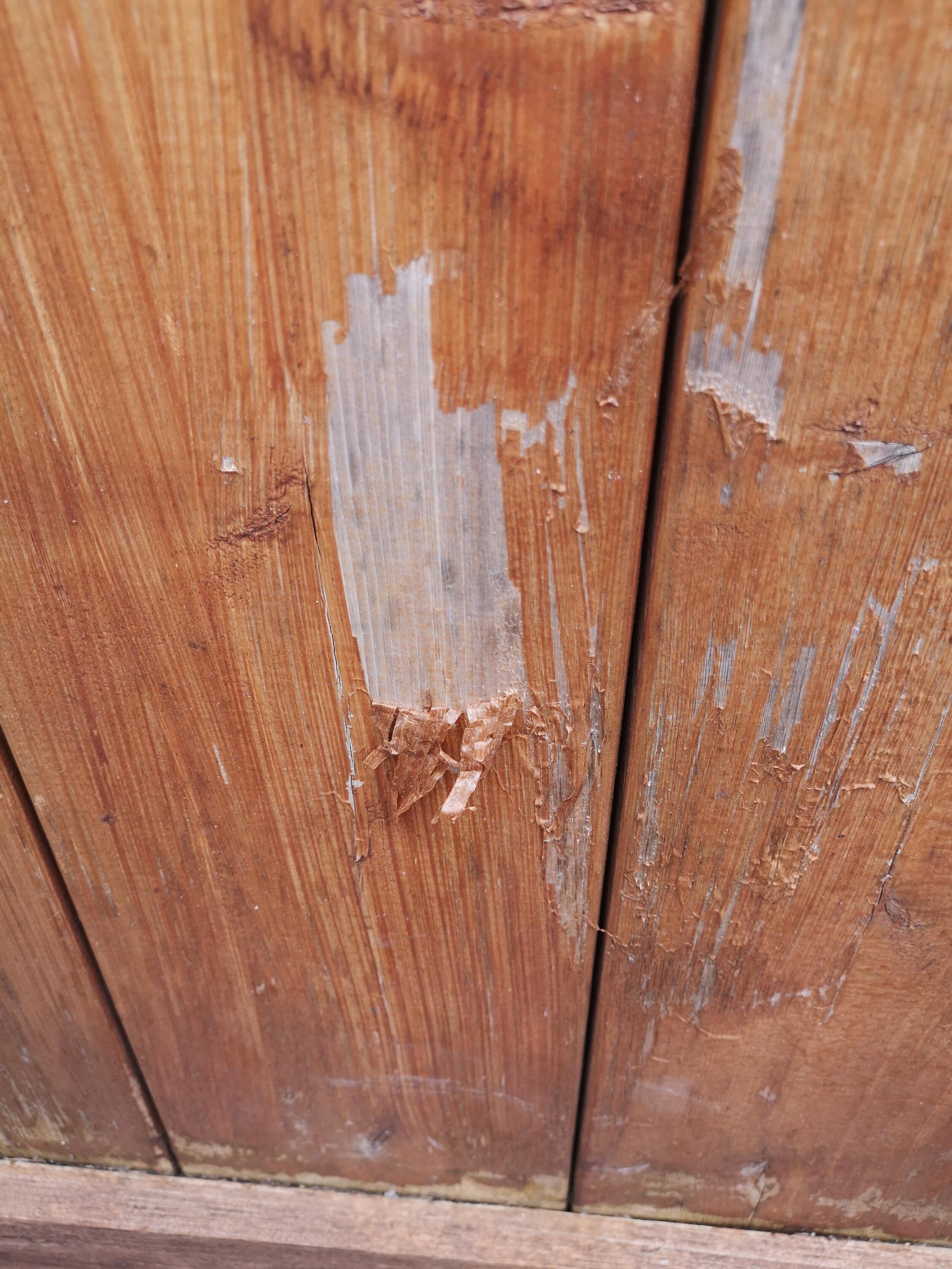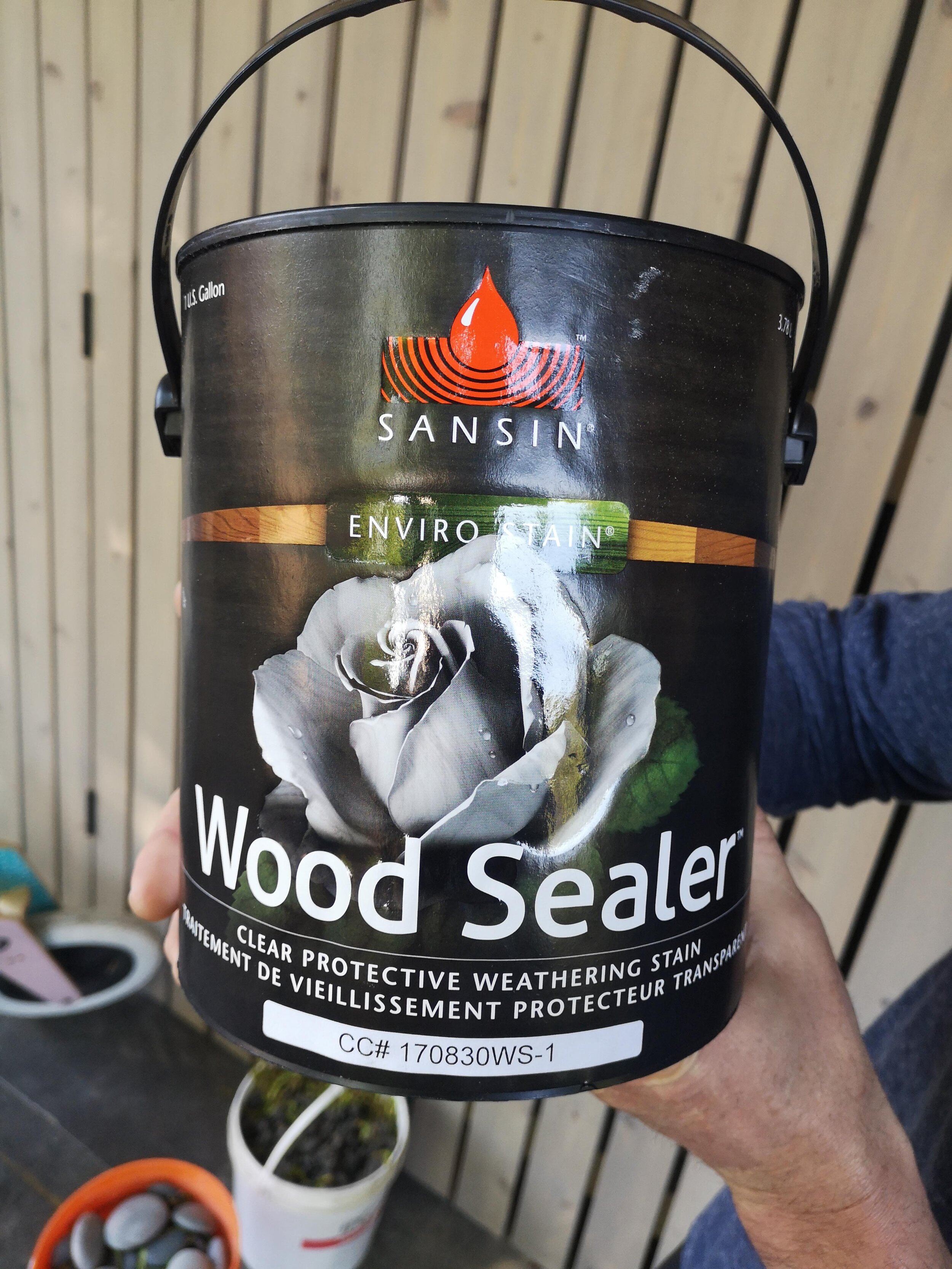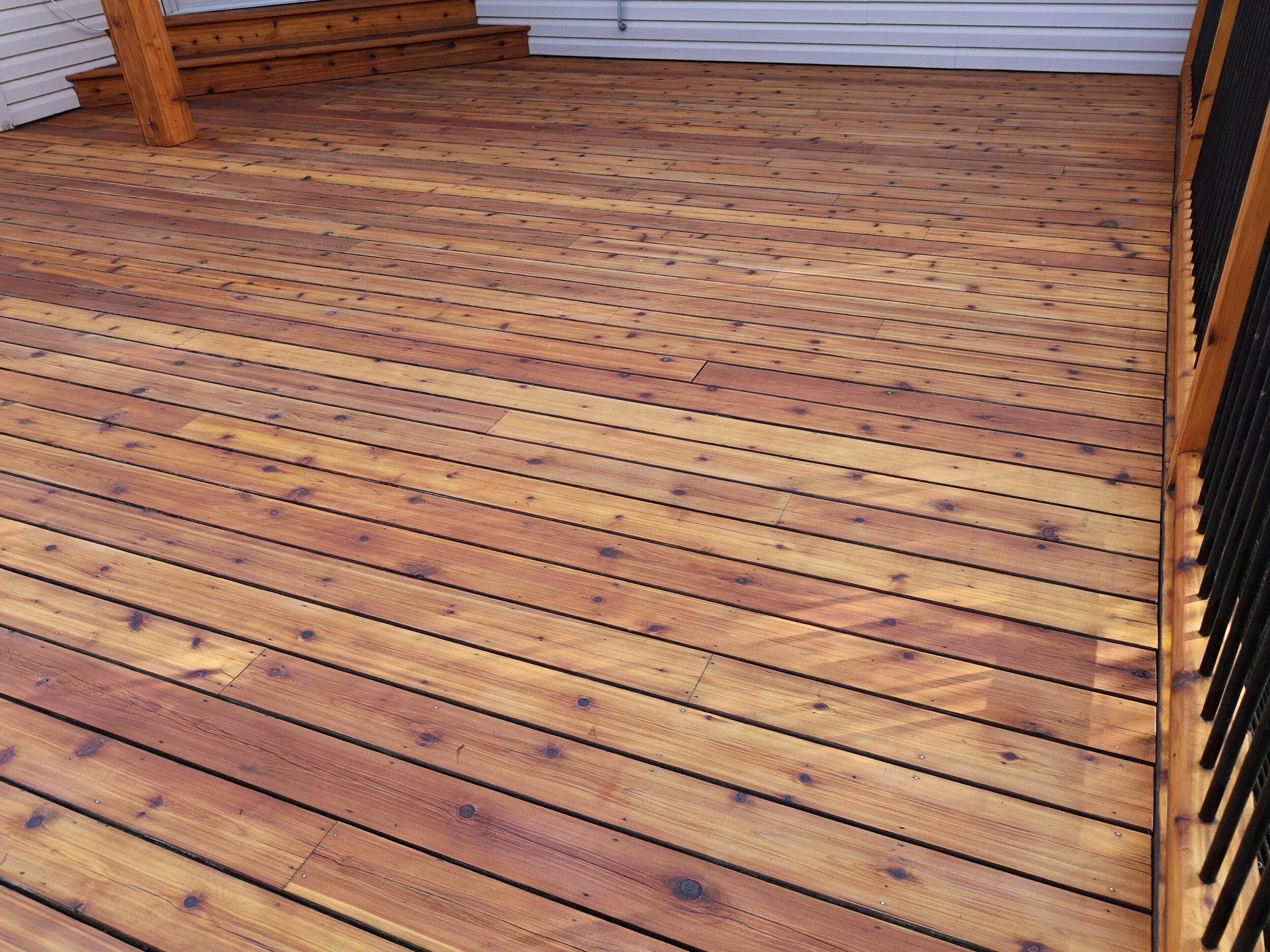Less Is More: Why One Coat Of Stain Conquers Two Against Deck Peeling
Before we get into why one coat is better than two to both protect your deck and prevent it from peeling, we need to go over a few assumptions about your deck, types of stain, and prep. If your deck consistently peels every year, no matter what you do, read our previous post, Why Your Deck Peels Every Year, for reasons about why that might be the case.
So, you invested good money into your brand new deck, or bought a house that came with a gorgeous deck in the backyard. You want to protect that investment as best you can, so the first inclination is to put as many protective layers on that wood as you can—’the more the better!’, you think to yourself.
Unfortunately, too much product is one of the surest ways to end up with a peeling deck—especially if it’s a thicker, water based formula.
Water Based Stains
Water based stains are typically thicker, in a semi-transparent or solid/opaque finish, making it more difficult to penetrate the wood. These properties are said to protect with a film layer on top of the wood, acting more like a paint than a stain.
Sounds like superior protection in theory, but because wood has its own oils and moisture, it makes it difficult for these stains to adhere—and adding more layers only makes it easier to peel right off.
This combined with brutally hot summer sun + heavy humid days, opposed by crisp, dry, unforgiving winter days for the other half of the year, Canada has arguably the worst seasons to protect wood from the weather and its harsh elements.
Most water based stain formulas call for 2-3 coats per application, building up layers to protect the wood from the outside versus from inside the wood. There are many reasons why this leads to peeling, one being the natural oils and moisture in wood push the stain coating away needing to be sanded or stripped (usually every year.)
This costs more in the long run: both in time spent sanding prematurely, money spent to hire a company or rent a sander, and lastly to reapply another 2-3 coats instead of one, costing far more in product needed per recoat.
The thicker the stain and the more layers applied, the worse the peeling problem will be creating a vicious cycle of wood prepping to reapplications to peeling and repeating.
Another problem of thicker stains combined with multiple coats is the wood cannot breathe because the moisture in the wood has nowhere to escape, causing the wood planks to become soft and begin to rot.
Clear Water Based Sealers
Although thin, clear water based sealers should have an easier time penetrating into the wood than water based stains, there are a few things to be aware of before applying on your deck or exterior wood to prevent it from peeling.
Some water based sealers are thick with a milky white or bluish hue that turn clear as they dry. One issue with this is if applied in direct sunlight or too hot a day when the outer layer dries extremely quickly with the underneath section still moist which can lead to bubbling or blistering in the finish.
As with all film forming products, the chances of peeling are exponentially higher (and even probable) to peel, and usually within its first year right after its first winter. This is as likely with a clear sealer as a coloured semi-transparent stain, for example.
Even the highest quality thin, clear penetrating sealers do not prevent the wood from turning gray from the sun’s UV rays. Natural “wet” wood is a common request, however, without any pigments in a sealer or stain, the wood will still fade to a gray colour, even though it still has protection.
Many sealers only require one coat per application which is ideal, however, this can still be an issue if they are a film forming product and build layers on top of the wood which will eventually start separating from the wood (much like the description above with thick water based stains.)
Hybrid Stains
Hybrid stains are essentially a combination of water based latex and oil formulated into one product. They are said to have the benefits of both products in one, although they still have some disadvantages of each as well. For example, the thicker properties of water based stain can still be a problem in heat and direct sunlight, not to mention annoying to apply with such a thick consistency.
For a specific example, we described our opinion about the recent Sherwin-Williams SuperDeck stain reformulation in 2020—ultimately resulting in us switching companies for our local business. Essentially we were happily using their penetrating oil stain formulation until they changed their product into a hybrid stain.
Penetrating Oil Stains
Needless to say, we are advocates and active users of true penetrating oil stains. These are best applied one coat at a time to keep the wood hydrated and lubricated inside, preventing premature rot keeping it saturated with protective oils without ever peeling.
This leaves zero film forming agents leftover on top of the wood after penetration so there is nothing to peel. Due to its thinness, it does mean it will fade, however, this is an easy fix with a simple single re-application of oil stain.
Again, keep the less-is-more method in mind in that you should re-apply as often as you like, with a thin coat (and wipe any excess stain) typically once a year—perhaps more / less depending on the deck’s exposure to sun, the elements, etc.)
Remember, with the penetrating oil stains you may choose to wash your deck prior to coating, but you do not need to sand before every recoat application after the initial sanding prep. The more often you recoat, the longer you typically get out of your deck before needing to sand again.
NOTE: If you have a pressure treated deck, be sure to read the 5 Reasons You Should Never Sand Pressure Treated Wood to potentially avoid sanding your deck at all and simply wash + recoat.
In Summary…
These are the main reasons one-at-a-time stain coat and recoat applications trump 2+ coats in deck maintenance.
You’ll save time and money on fewer coats in general, using less product, having to spend less time needlessly repeating prep work or less money on hiring contractors or renting equipment.
If you like our philosophy and want a deck that never peels, feel free to use our flagship Sand & Stain System—it’s the exact same method we use for our valued clients in our own local business.





